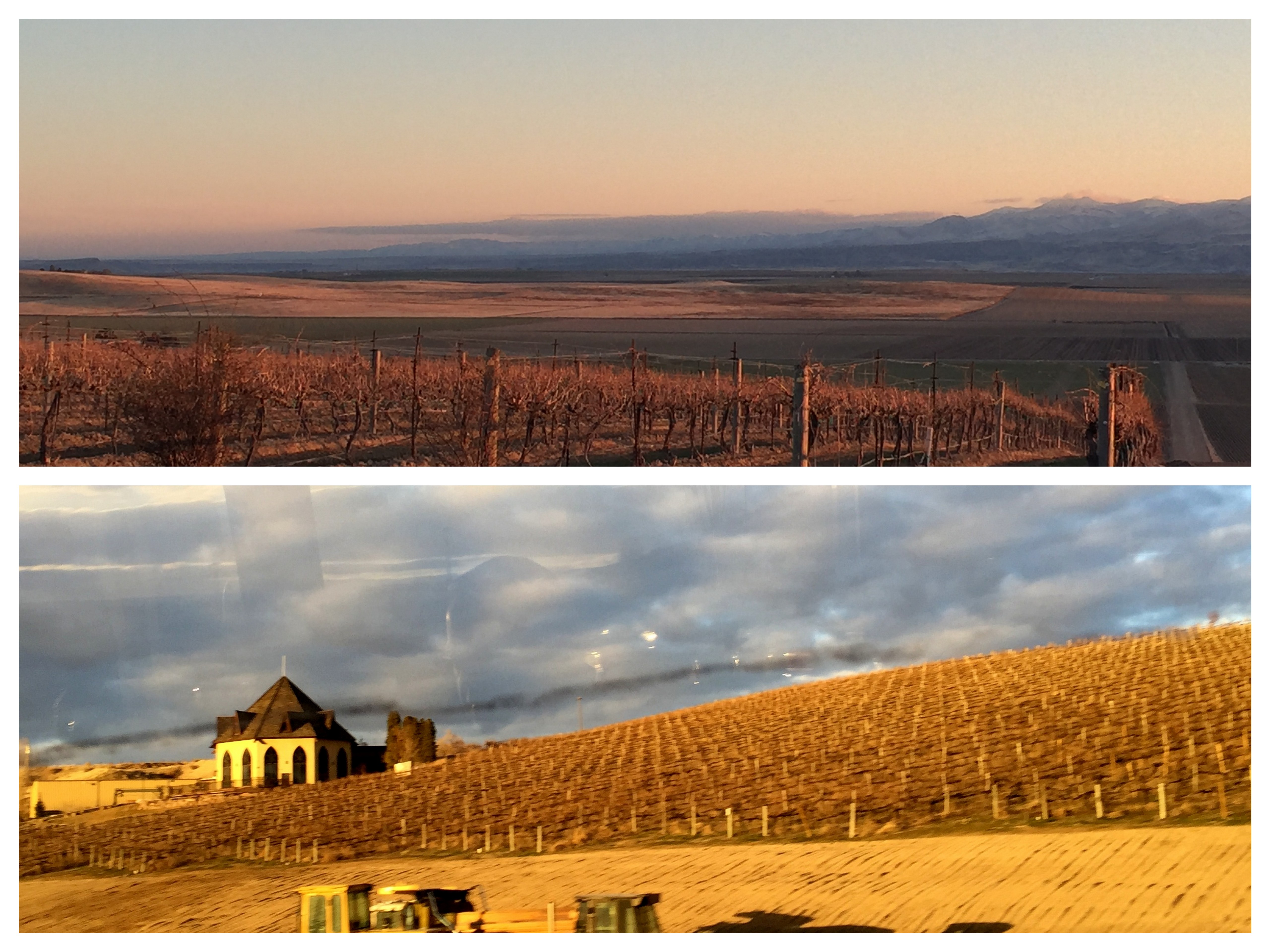
Sawtooth Vineyard (top) and Ste. Chapelle west of Boise
Let's name some famous state crops, shall we? Oranges from Florida, apples from Washington, corn from Kansas, lobsters from Maine, cattle from Texas, potatoes from Idaho.
But grapes from Idaho? Famous potatoes, you bet. After all, it was potato farmer J.R. Simplot's development of a commercially viable frozen french fry (McDonald's was an early customer) that made him a billionaire.
Yes, but grapes?
Well, not today, and probably not tomorrow, but someday soon, experts say, Idaho grapes will be as famous as California's cabernet and merlot, Oregon's pinot noir or Washington's chardonnay. And their quality will rival the world's best.
Viticultural pioneers have been growing wine grapes in Idaho almost since Lewis & Clark crossed the Continental Divide, but it's been only 30 or 35 years since modern technology has been brought to bear on the vineyards of the Snake River Valley. The vineyard soil in eastern Washington, just to the west, is basalt covered in windblown loess; here, atop dormant volcanoes, it's lava domes with cinder cones.
Idaho still has barely 1,500 vineyard acres, most them an hour or so west of Boise, but the most dramatic landscapes are in the Lewis-Clark Valley some 300 miles further north.
The Sawtooth vineyard, west of Boise, lies in a valley surrounded by rolling hills that look like crumpled army blankets dusted with powdered sugar. Its 400 acres, first planted three decades ago, grow 14 grape varieties, from a crisp riesling to a lush syrah.
Idaho wine making today is dominated by women , none more prominent than Meredith Smith, who heads the wine making team for the state's two biggest wineries, Ste. Chapelle and Sawtooth (both owned by Precept Wine out of Seattle, which hosted my trip to Boise). Smith, who recently turned 50, put herself through Washington State University's graduate program in viticulture after a successful career in real estate in Texas, and worked her way up from harvest hand to cellar rat to chief wine maker. Her portfolio covers whites like dry riesling and chardonnay (and an exceptional 2017 pinot gris) to reds like syrah and tempranillo.
Smith is not only responsible for her own production (a combined 120,000 cases for the two wineries), but travels across Idaho as a volunteer coordinator for a statewide project to collect data on vineyard growing conditions. At last week's annual meeting of the Idaho Wine Commission, Smith presented detailed research into the influence of temperature variations on vineyard yields, reminding everyone in attendance that she's not just the state's top wine maker, but probably its top viticultural scientist as well.
Melanie Krause, the founder of Cinder Wines, has spent her entire career in the wine industry. After graduating from Washington State University she went to work for Chateau Ste. Michelle, then joined the wine making team at Canoe Ridge. She struck out on her own in 2012, and has run Cinder Wines ever since. Her Dry Riesling won a Best in Show award at the Idaho Wine Competition in 2017, and her current release of a dry viognier is outstanding. At 8,000 cases, she's making enough wine now to get some regional distribution.
And distribution is still a stumbling block for Idaho wines. The most profitable customer is still a visitor to the retail tasting room; the loyal "wine club" customers (between 500 and 1,500 members) who promise to buy a case a year are the biggest sources of cashflow and profit for tiny Idaho wineries.
Back to the potatoes for a moment: Simplot alone has half a million of acres of spuds (and onions and other crops) across Idaho, dwarfing the state's 1,500 vineyard acres; the state's 50 wineries still buy more than half their grapes across the border, in Washington State.
Boise, Idaho's thriving capital city, is no longer reliant on the tech industry (Micron, in particular) as its education system (especially Boise State University) brings in more young people, and its low cost of living attracts retirees. It was once headquarters to construction giant Morrison-Knudsen (whose website these days, fittingly, is "under construction"), timber giant Boise Cascade, supermarket giant Albertsons, and agricultural giant Simplot.
While no one would claim that its cultural scene rivals LA or San Francisco, Boise is also home to Idaho's substantial Basque community, families who settled in Idaho over the past century, originally working on the sheep ranches in the Sawtooth Mountains east of Boise. The tradition is kept alive with a modest Basque Block downtown and an annual Trailing of the Sheep Festival in Ketchum, 150 miles east of here.
The new local "tradition" is wine. Half the state's 50 wineries are in the Boise area, most with fully equipped production facilities, attractive tasting rooms open to the public, a roster of loyal wine club members, and a calendar of special events from dinners to concerts. There's a growing appreciation throughout the community of the economic, cultural, and artistic value of the local wine industry, which extends to locally crafted beer, cider, and distilleries. Some $200 million a year from wine alone.
It's easy to forget that a wine culture doesn't happen overnight. Oregon and Washington wineries struggled, 30 years ago, to create a higher profile for their bottles, and looked enviously at California's Napa Valley, which had the advantage of proximity to the large urban area surrounding San Francisco. "But we're getting there," Idaho seems to be saying. "Just watch."
As more vines are planted in Idaho's warm, dry valleys, as the vineyards mature and more grapes are harvested, as more wineries come on line and more local wines reach retail shelves, there will be a lot more to watch in Idaho than those famous potatoes.
Note: this post also appeared, in slightly different form, on Forbes.com
Leave a comment